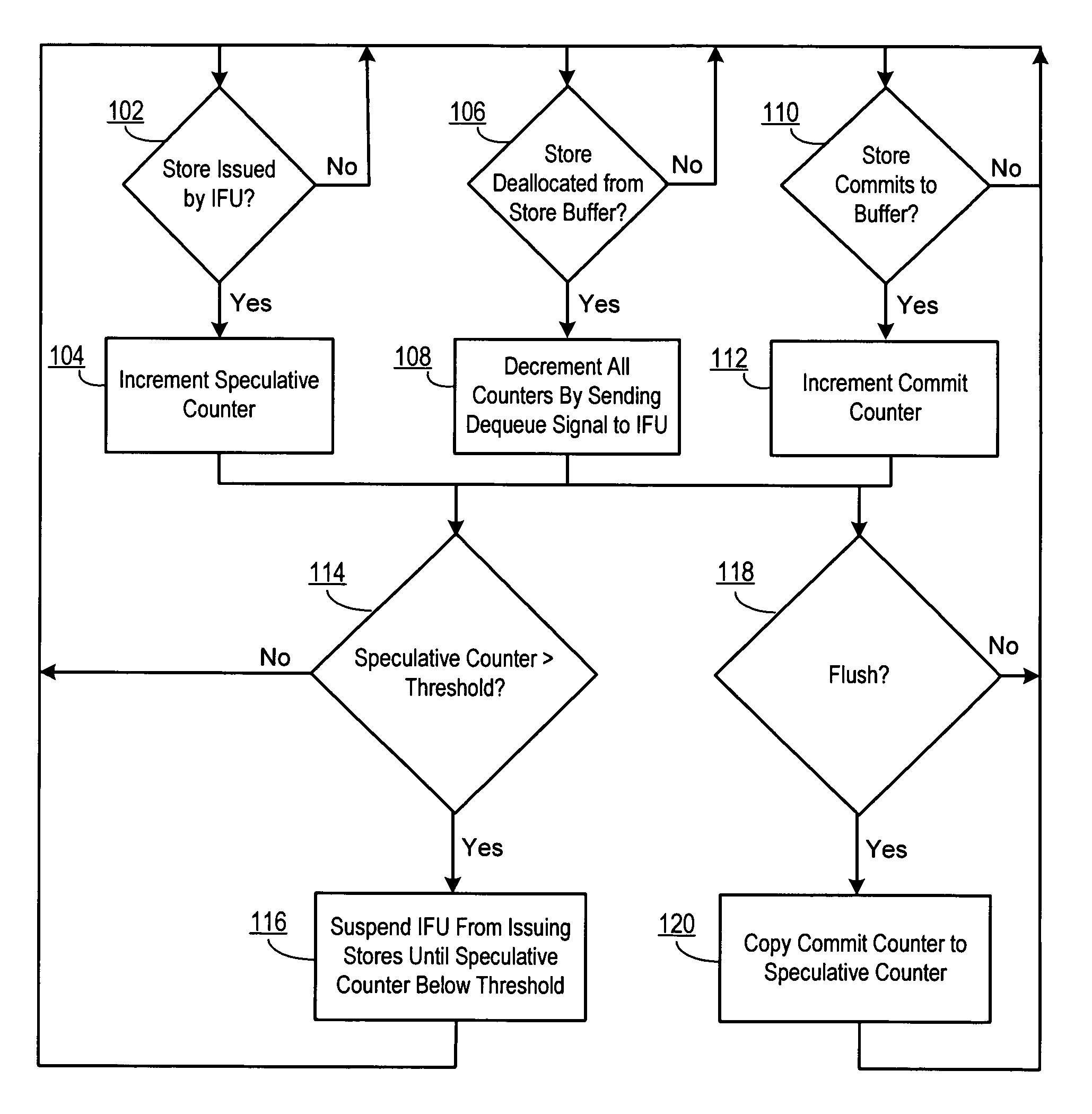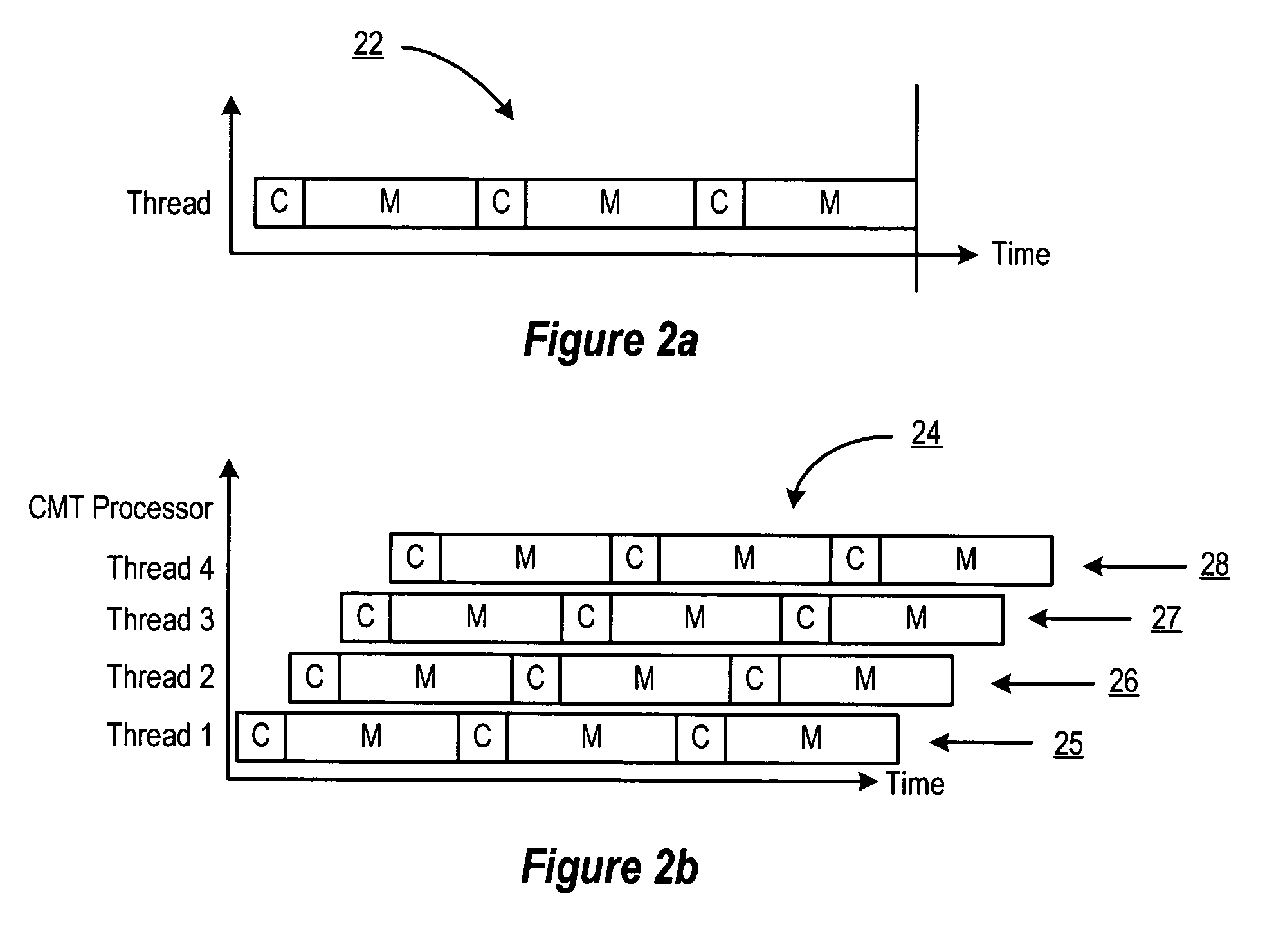Efficient utilization of a store buffer using counters
a counter and store buffer technology, applied in the field of memory operations in multi-threaded processors, can solve the problems of stalling and idling pipelines, affecting the efficiency of store buffer entries, and increasing the gap between processor speed and memory access speed, so as to minimize the operation time and power usage, and efficiently process store buffer entries.
- Summary
- Abstract
- Description
- Claims
- Application Information
AI Technical Summary
Benefits of technology
Problems solved by technology
Method used
Image
Examples
Embodiment Construction
[0021]As explained herein, when multiple store operations are being processed by a multithreaded processor, the memory operations must be coordinated so that each thread can store data to the memory in an ordered and coherent way with minimal delay or latency. For purposes of providing an exemplary and not limiting description, it will be useful to describe the various aspects and embodiments of the invention herein in the context of data store operations to an on-chip cache memory system that is constructed with CMOS SRAM memory cells. However, the present invention is not limited to CMOS-based processes and may be used in connection with other categories of memory products, including without limitation, DRAM, ROM, flash, PLA and the like, whether integrated within a VLSI system, cache or non-cache, or a stand alone memory device.
[0022]A selected embodiment of the present invention is shown in FIG. 3, which depicts a simplified schematic diagram of a processor chip 30 having multip...
PUM
 Login to View More
Login to View More Abstract
Description
Claims
Application Information
 Login to View More
Login to View More - R&D
- Intellectual Property
- Life Sciences
- Materials
- Tech Scout
- Unparalleled Data Quality
- Higher Quality Content
- 60% Fewer Hallucinations
Browse by: Latest US Patents, China's latest patents, Technical Efficacy Thesaurus, Application Domain, Technology Topic, Popular Technical Reports.
© 2025 PatSnap. All rights reserved.Legal|Privacy policy|Modern Slavery Act Transparency Statement|Sitemap|About US| Contact US: help@patsnap.com



